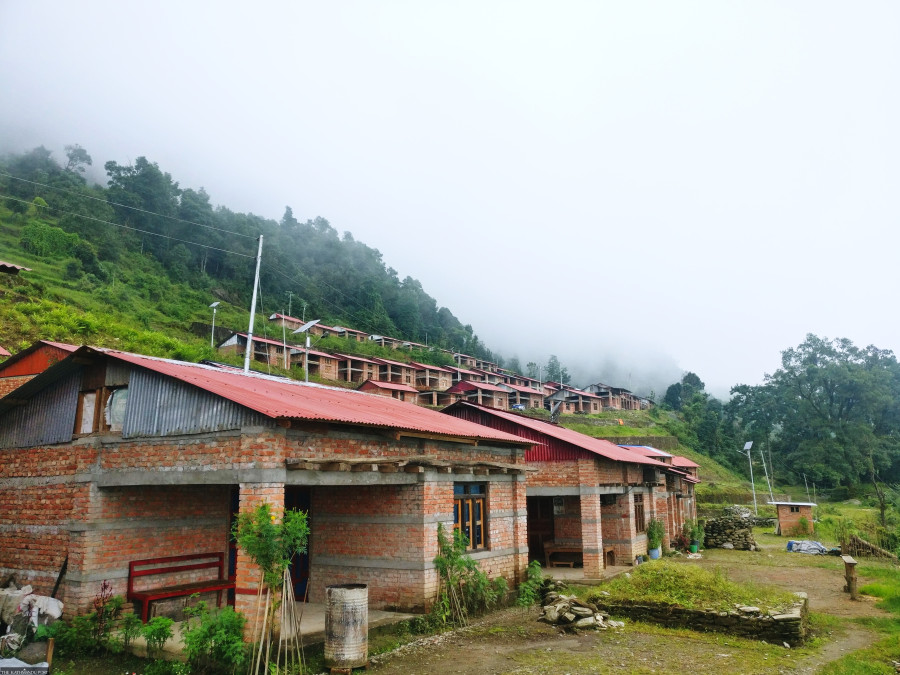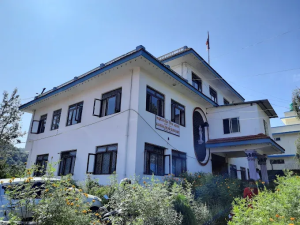Bagmati Province
No takers for houses at Dolakha integrated settlement
A majority of beneficiaries have decided to stay back in their old village because they do not want to leave behind their farmland and cattle.
Kedar Shiwakoti
The National Reconstruction Authority had initiated the construction of the integrated model settlement in Panipokhari of Bhimeshwar Municipality-1 to resettle 84 earthquake-displaced families from Bosimpa.
However, a majority of beneficiaries of the housing programme have decided to stay in their old settlement because they do not want to leave behind their farmland and cattle.
“Most earthquake-displaced families from Bosimpa decided not to move into the new settlement because, besides the house, there isn’t much around here,” Bhola Thami, one of the beneficiaries of the housing programme, told the Post. “People are staying in their ancestral land despite the risk of landslides during the monsoon season because they have their cattle and fields back there. The government helped us secure a safe location but they did not think about how we would make a living here.”
Thami, a resident of Bhimeshwar Municipality-1, is one of the eight families who moved into the new model settlement. He is unsure of how long he is going to live in his new house since he neither has agricultural land nor employment prospects in the new settlement.
The integrated settlement, which is 45 minutes from Bosimpa, has been constructed for the marginalised Thami community.
“Some of the quake victims have already constructed houses in Bosimpa itself due to delay in the completion of the integrated settlement in Panipokhari while some have built houses in other places,” he said.
The federal government has also provided land ownership certificates to all families who received houses in the integrated settlement. According to the agreement, the beneficiaries cannot sell the houses within 10 years of the construction period.
However, the construction work of the integrated settlement is not complete.
Bhakta Bahadur Thami, a local resident, said another reason why most of the villagers have not moved into the integrated settlement is because the doors and windows in most houses are yet to be installed.
“The government estimated the cost of building a house at Rs 300,000 but the cost has crossed Rs 1 million. We had to bear the additional cost and take loans in order to continue with the construction of the house,” said Bhakta Bahadur.
The federal government provided Rs 300,000 and the municipality distributed Rs 30,000 to each beneficiary to construct a house in the settlement but the money wasn’t enough, according to Gyan Krishna Thami, another beneficiary.
“That’s why most houses are incomplete,” he said.
The government had assured technical help and trained workers to develop the settlement but when construction began, no one showed up, according to Gyan Krishna.
“We somehow completed the construction work on our own. We had to pay for some workers as the government did not send the promised help,” said Gyan Krishna.
Meanwhile, Ramsharan Neupane, a technician at the district project implementation office of the National Reconstruction Authority, says he hopes that the people living in high-risk areas move into the settlement soon.
“The newly constructed integrated settlement wears a deserted look because the beneficiaries have chosen to stay in their old settlement for employment and farming reasons. But we hope that those at high risk of landslides will move into the settlement,” said Neupane.
The model integrated settlement is connected with a road network and has facilities like electricity, drinking water and a children’s park. There is also a health post and a school nearby.




 9.12°C Kathmandu
9.12°C Kathmandu











%20(1).jpg&w=300&height=200)

